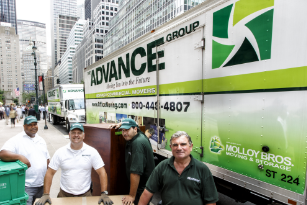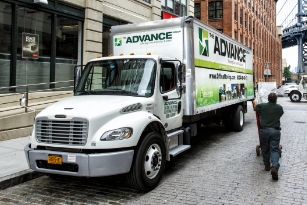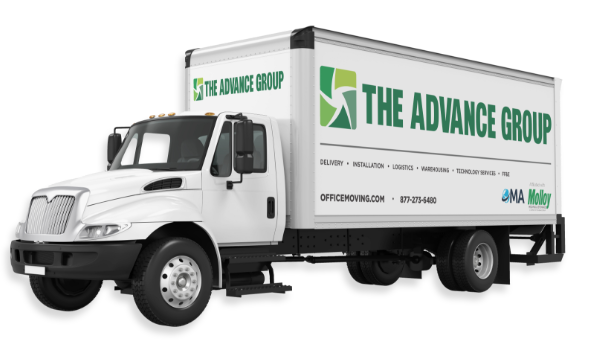Digital Tools Revolutionizing Commercial Moving and Logistics

Commercial moving and logistics have undergone a remarkable transformation in recent years. Technology has moved beyond simple tracking systems to encompass sophisticated digital tools that optimize every aspect of commercial relocations. From artificial intelligence predicting optimal routes to augmented reality helping with space planning, these innovations are reshaping how businesses approach their moves. Understanding and leveraging these tools can mean the difference between a chaotic relocation and a seamless transition.
Advanced Project Management Platforms
Modern commercial moving projects require coordination across multiple teams, vendors, and timelines. Digital project management platforms have evolved to handle the complexity of large-scale relocations. These systems integrate scheduling, resource allocation, and communication into unified dashboards that provide real-time visibility across all moving components.
Cloud-based platforms enable stakeholders to access project information from anywhere, facilitating remote collaboration and providing instant updates. Integration with mobile devices enables project managers to update status, upload photos, and communicate directly with teams from the worksite. This level of connectivity eliminates information silos and reduces the risk of miscommunication that can derail moving schedules.
IoT Sensors and Smart Tracking
Internet of Things (IoT) technology has introduced new levels of precision to asset tracking during commercial moves. Smart sensors attached to equipment, furniture, and sensitive items provide continuous monitoring of location, temperature, humidity, and shock levels throughout the relocation process.
These sensors are particularly valuable for businesses moving sensitive equipment, laboratory instruments, or climate-controlled inventory. Real-time alerts notify moving teams immediately if environmental conditions exceed safe parameters, allowing for quick intervention to prevent damage. GPS-enabled tracking provides precise location data, eliminating the guesswork about the location of specific items at any point in the moving process.
AI-Powered Route Optimization
Artificial intelligence has revolutionized logistics planning by analyzing vast amounts of data to determine the most optimal routes and schedules. AI algorithms consider factors including traffic patterns, weather forecasts, road construction, weight restrictions, and delivery time windows to create the most efficient moving plans.
These systems continuously adapt to changing conditions, automatically rerouting trucks around unexpected delays or suggesting alternative loading sequences to maximize efficiency. The result is reduced transportation costs, shorter moving timelines, and more predictable arrival schedules that minimize business disruption.
Virtual and Augmented Reality Planning
Virtual reality (VR) and augmented reality (AR) technologies are revolutionizing pre-move planning and post-move setup. VR allows teams to virtually walk through new spaces before the physical move virtually, identifying potential layout challenges and optimizing furniture placement without the trial-and-error approach of traditional moves.
AR applications overlay digital information onto physical spaces, helping moving teams visualize where specific items belong in the new location. This technology accelerates the unpacking and setup process while reducing the likelihood of items being placed incorrectly and requiring subsequent repositioning.
Digital Inventory Management Systems
Gone are the days of paper-based inventory lists that can be lost or damaged during moves. Digital inventory management systems use barcode scanning, RFID tags, and photo documentation to create comprehensive databases of all items being relocated.
These systems enable instant searching and sorting of inventory by category, destination room, priority level, or handling requirements. Integration with project management platforms means inventory data automatically updates move schedules and resource allocations, ensuring the right equipment and personnel are available when specific items are being relocated.
Automated Communication Systems
Keeping all stakeholders informed during complex commercial moves requires sophisticated communication tools. Automated systems send targeted updates to various groups based on their roles and specific information needs. Employees receive updates about their department’s move schedule, while executives get high-level progress reports and milestone notifications.
These systems can be programmed to escalate communications when issues arise, ensuring that the right people are notified immediately when problems require attention. Integration with corporate communication platforms means updates flow seamlessly into existing workflows without requiring additional apps or systems.
Predictive Analytics for Risk Management
Predictive analytics tools analyze historical moving data, weather patterns, and other variables to identify potential risks before they become problems. These systems can predict which items are most likely to be damaged during specific types of moves, identify routes prone to delays, and pinpoint periods that present the highest risk of complications.
This insight allows moving teams to take proactive measures, such as using additional protective packaging for high-risk items or scheduling buffer time for moves during challenging periods. The result is fewer surprises and more successful relocations.
Moving Forward with Technology
The integration of digital tools in commercial moving represents more than just technological advancement—it’s a fundamental shift toward data-driven decision-making and proactive problem-solving. Companies that adopt these technologies gain a competitive advantage through reduced costs, shorter timelines, and higher success rates for their relocations. As these tools continue to evolve, the gap between technology-enabled moves and traditional approaches will only widen, making digital adoption essential for businesses planning future relocations.
Ready to experience the next generation of commercial moving? Contact our team to learn how we integrate cutting-edge technology into every aspect of your business relocation.








